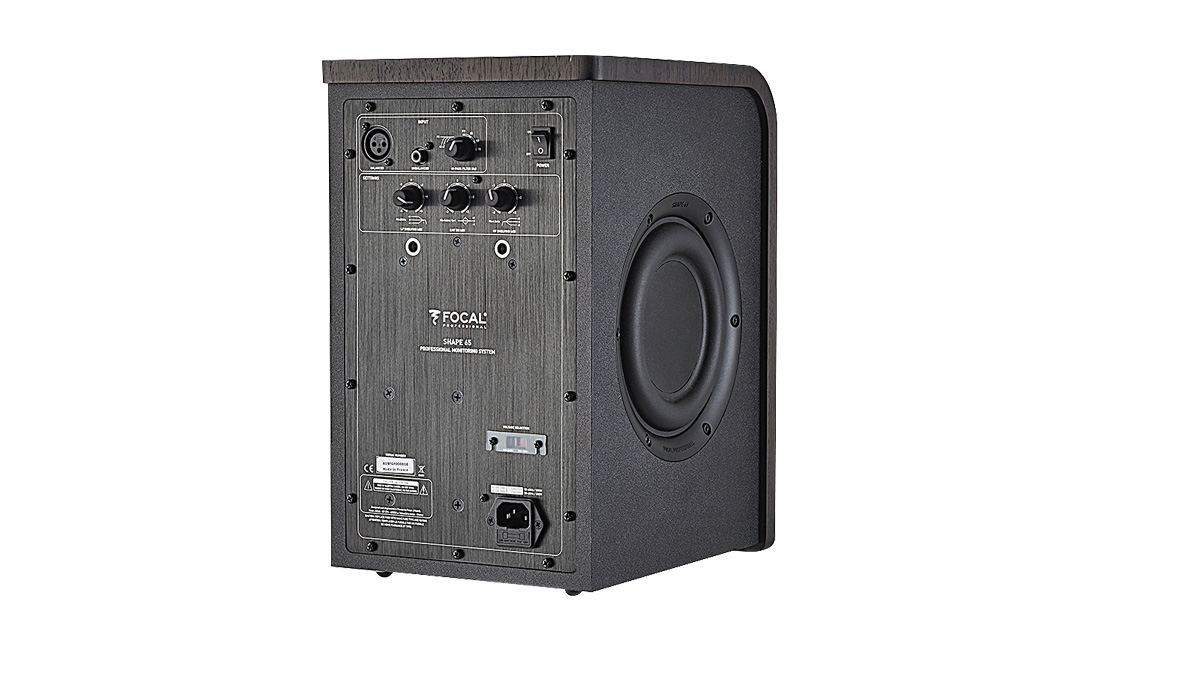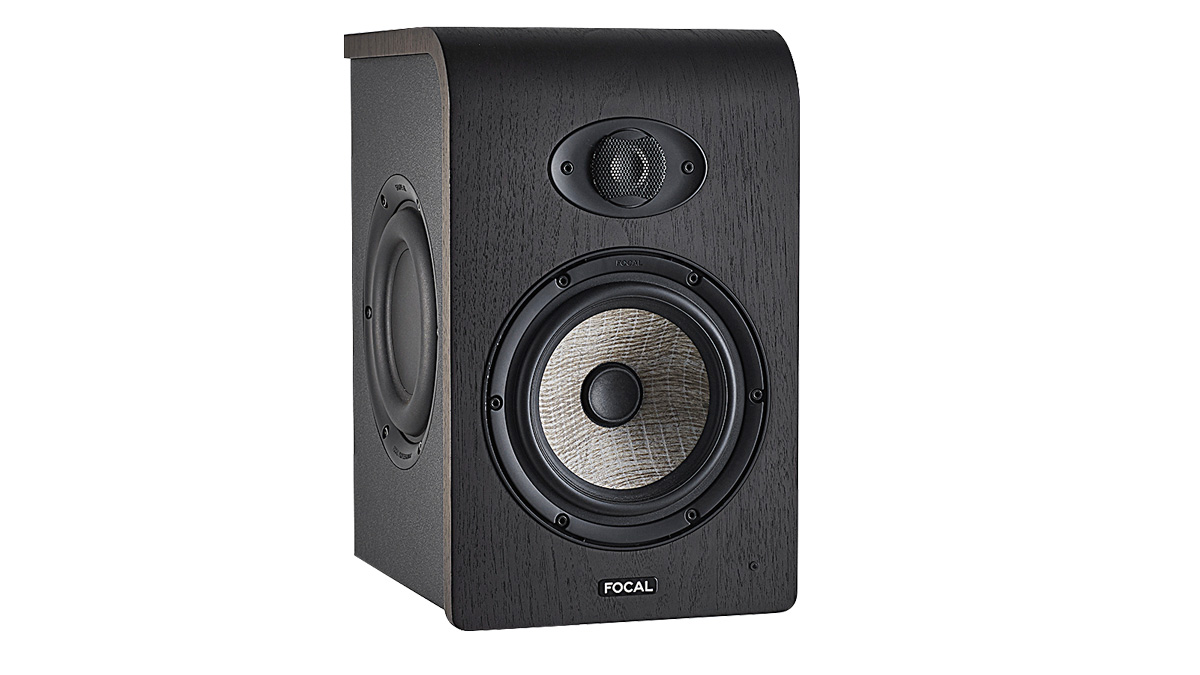MusicRadar Verdict
The frequency balance is quite delicious, with exceptional transient detail and gin-clear stereo – maybe it is time you upgraded your monitors.
Pros
- +
Makes mix decisions easier and better.
- +
Super-accurate transient details
- +
Easy-to-tweak EQ.
- +
Passive radiators offer flexibility.
Cons
- -
Sub bass response is not as good as larger monitors.
- -
Automatic bypass is annoying and can't be switched off.
MusicRadar's got your back
When Focal introduced its new Shape range of studio monitors, its task was clear, but no less formidable – replace the French manufacturer’s popular CMS line.
The Shape range comes in 40, 50 and 65 flavours, and it is the latter we are looking at here. In terms of price, the Shape range is positioned somewhere between Focal's budget-friendly Alpha series and the Solo6 Be – another 6.5" two-way monitor.
- Cast an eye over the best studio monitors
- Prefer to mix on cans? Take a look at the best studio headphones
The Shape series is interesting departure for Focal – certainly in terms of aesthetics. The main speaker cabinet is black-painted MDF, finished with a luxurious walnut veneer that is less of your ‘studio spaceship’ style and more in the realm of ‘hi- connoisseur.’
Indeed, the Shape series would not look out of place in a home cinema setup. On the underside, you'll find four spikes per speaker, which comes in handy for acoustic decoupling and adjusting ring angle. A two-way design, the 65s have a 1" aluminium/magnesium inverted dome tweeter and 6.5" “ex sandwich cone woofer”.
The Shapes are non-ported – interestingly enough – and feature dual 6.5" passive radiators, each positioned on either side of monitor. Like most, we typically prefer the tighter bass response and positional flexibility that non-ported designs provide – but it is fascinating that Focal implementing this in a monitor priced for the ‘dedicated prosumer’.
The Shape series would not look out of place in a home cinema setup
There is an obvious drawback from having side radiators – the monitors must be placed vertically. But not everyone will consider that a dealbreaker.
With our reference material, we found low-mids and bass regions to be lacking a little for a studio monitor, but there are the plentiful rear EQ controls to adjust it.
Here you will find a 12dB/oct high-pass filter for subwoofer integration, low-shelf boost/cut (+/-6dB at 250Hz), high-shelf boost/cut (+/-6dB at 4.5kHz) and low-mid bell boost/cut (+/-3dB at 160Hz).
After a quick tweak, we found that a +1dB low-shelf dialled in the required weight required for the room.

Most audio pros tend to align with a particular speaker manufacturer. This makes perfect sense – after all, what one person's shimmering top end might be an ice-pick to the inner ear of another.
But we are already a fans of the Focal sound – it is ‘mid-forward’, and steers you towards a balanced mix, especially in the midrange. The Shape 65s are excellent in this regard. After a couple of test mixes, they were shaping our decision-making in the right direction. When it comes to translation, what you hear is what you end up with on other systems.
You get what you pay for when it comes to frequency balance; it really is exceptional. The highs are sparkling and detailed without sounding that metallic, plastic quality you can get from inferior monitors. The mids are balanced and faithful to the source.
What's great about Focal monitors is that they shy away from that sterile ruthlessness; all too often, more clinical monitors can simply be uninspiring. But don't worry, there's still an abundance of transient detail, with a depth and accuracy to help you with critical decisions with regards EQ and dynamics.
Let's nitpick a bit. When we compare the Shape 65s to more expensive rivals from Barefoot, Neumann, HEDD etc, there is a very subtle homogeneous quality. There aren't the night-and-day differences in our tracks as with more expensive mastering-grade alternatives. But these are high-end gripes – the 65s more than make up for that with personality and character.
The Shapes feature an automatic bypass function, just like Focal’s Trio6 Be monitor. If no signal is passed through them for 30 minutes, the green light on the front turns red, and the speakers put themselves into ‘bypass’ mode – with a firm click.
In theory, it's a neat power-saving idea, but it is annoying in practice. That two, three-second wait for audio after you hit play again is a pain. If you monitor quietly, you might even need to turn your levels up before the sound comes back on. Unfortunately, you can't turn this feature off.
When it comes to low end, the 65s aren't quite so overwhelming with the sub bass in as larger monitors; there are physical limitations of having a 6.5" woofer.
For our first couple of sessions, the Shapes’ 40Hz-35kHz frequency response was lacking – at least to our tastes, and the sub-bass junkies out there would definitely want to partner these with a subwoofer.
But it soon becomes clear that there’s enough low end info to work with. Dive in and balance the sub bass on the 65s in comparison to a reference track of your choice then your mix will translate perfectly – though perhaps double-check the mix through your headphones first.
Furthermore, the superb midrange representation – and we're talking especially about the low-mids – really helps you nail your low-mid EQ and dynamics. It's here we you find those important low- frequency harmonics that clash with other sounds.
Stereo imaging is second to none. It is so easy to position mix elements around the stereo field. The tweeter’s low directivity allows for a flexible listening position. The accurate stereo image was consistent whenever we reached out for synths and gear at various off-axis positions around our room. The 65s performance was better than some directional monitors we’ve used.
All in all, the Shape 65s might even be the best-sounding and effective monitor speakers in this price range. They offer superb value. Okay, that sub-bass response won’t take the air out your lungs but for smaller, less-treated home studio setups this could be all important.
What the 65s do really well is guide your towards better mixes that sound just as they should through other systems. For serious monitor upgrades, we'd definitely recommend test-driving the Shape 65s.
MusicRadar verdict: The frequency balance is quite delicious, with exceptional transient detail and gin-clear stereo – maybe it is time you upgraded your monitors.
With its latest free update, Ableton has finally turned Note into the app I always wanted it to be
Technically capable, but struggle to make your tunes sound musical? 5 simple music theory hacks to make your tracks stand out
"Despite its size, it delivers impressive audio quality and premium functions as well as featuring a good selection of inspired sounds": Roland GO:Piano 88PX review










